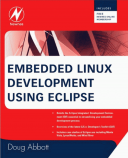Книга: Embedded Linux development using Eclipse
Summary
Summary
In this chapter we’ve seen how some of the major players in the open source software business have adapted the Eclipse platform to create high quality commercial software development tools. Each vendor has chosen a slightly different approach that emphasizes its particular strengths to differentiate its offerings from the competition.
Free software doesn’t necessarily mean free of charge, and in fact there’s no such thing as zero cost software[15]. One way or another you’re going to pay for it. You can download it all from the Internet and go through the inevitable learning curve. On the other hand, the most cost-effective way to get your product out the door on time may be to buy a high-quality commercial tool.
This brings us to the end of our exploration of Eclipse as a platform for developing embedded software around Linux. We’ve seen how Eclipse provides intuitive, graphical tools for building and managing software projects of any size. Even though Eclipse was originally aimed at Java development, additional plug-ins provide facilities to work with the GNU compiler tool chains for C and C++ development. For the embedded space in particular, Eclipse offers tools to access and manage remote target hardware.
We looked at the Eclipse plug-in architecture and how it extends the functionality of the basic platform. Well over a thousand plug-ins, both open source and commercial, provide support for just about any development task you require. If you can’t find what you need, you can always create your own.
Needless to say, there’s a lot more there. We’ve really only scratched the surface. I hope I’ve piqued your interest sufficiently to dive in and play around with it some more. And don’t forget that Eclipse is constantly evolving.
You may even want to get involved in Eclipse development itself. The Eclipse community enthusiastically welcomes new contributors.




